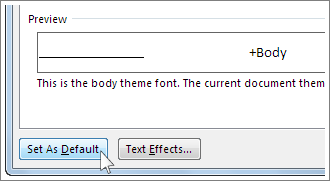- Font Dialog Box Microsoft Word
- List Of Microsoft Word Font Styles
- Microsoft Word Font Dialog Box Template
Launch Microsoft Word 2013/2016 for Windows. On the Home tab, click on the Font Dialog Box Launcher ( small arrow pointing down, right bottom corner) from within the Font group. Select the options you want to change, such as the Font, Font style, and Size. On the bottom left side of the Font window, click on the Set As Default button. On the Home tab, click on the Font Dialog Box Launcher from within the Font group. Use the Ctrl+D keyboard shortcut to quickly summon the Font dialog box. Select the options you want to change, such as the Font, Font style, and Size. The best benefit of the Font dialog box is its Preview window, at the bottom. Click the Font dialog box’s Text Effects button to access interesting text attributes such as Shadow, Outline, Emboss, and Engrave.
Font Dialog Box Microsoft Word
Home > Articles > Home & Office Computing > Microsoft Applications
 ␡
␡- Creating Custom Color and Font Sets

List Of Microsoft Word Font Styles
Like this article? We recommend
Like this article? We recommend
Creating Custom Color and FontSets
You can create custom themes that include your own choices for fonts, colors, and effects. You can assign them names, and then share them with other computers and other users. This enables you to combine the qualities of different themes into a single theme that exactly meets your needs. Furthermore, you can also create your own custom font and color sets.
To create your own color set, follow these steps:
- In Word, choose Design, Colors, Customize Colors.
- In the Create New Theme Colors dialog box (Figure 7), open the drop-down list for each of the theme color placeholders and select a different color.
- Type a name for your custom color theme in the Name box, and then click Save.
In Excel, choose Page Layout, Colors, Customize Colors.
In PowerPoint, on the Design tab, click the More button for the Variants group, point to Colors, and choose Customize Colors.
Figure 7: The Create New Theme Colors dialog box.
In most cases, you will want to choose one of the Standard Colors or click More Colors and then choose a color from the Colors dialog box. If you choose a color from the Theme Colors section, that placeholder will be defined as whatever color is assigned to that other placeholder. Sometimes that might be useful--for example, you might have Accent 1 be a 25% shade of whatever color was chosen for Accent 2. Normally, though, it just gets confusing.
Creating a custom font set is very similar, except you are defining fonts instead of colors. Follow these steps:
Microsoft Word Font Dialog Box Template
- In Word, choose Design, Fonts, Customize Fonts.
- In the Create New Theme Fonts dialog box (Figure 8), open the drop-down list for each Heading Font and Body Font and select the fonts you want to use.
- Type a name for your custom font theme in the Name box, and then click Save.
In Excel, choose Page Layout, Fonts, Customize Fonts.
In PowerPoint, on the Design tab, click the More button for the Variants group, point to Fonts, and choose Customize Fonts.